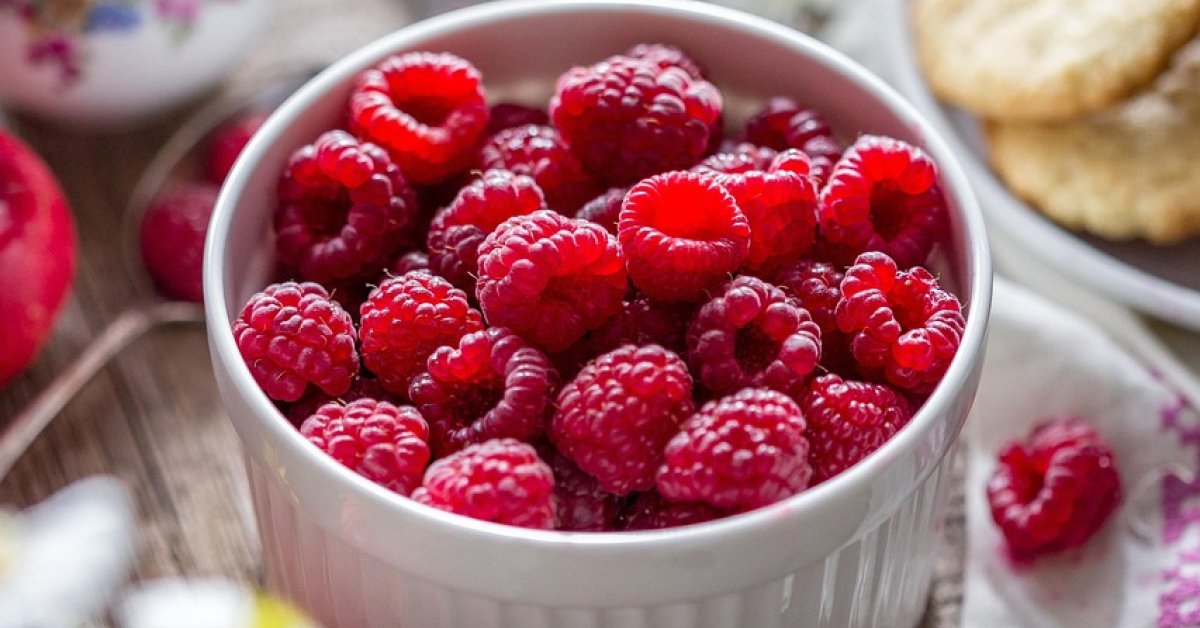When I first switched to a vegan diet I was excited to explore new foods but quickly realized I needed to pay closer attention to certain nutrients. Selenium was one of those tricky minerals I’d never really thought about before. It’s essential for my immune system and energy but it’s not always easy to spot in plant-based foods.
I found myself wondering how to get enough selenium without relying on animal products. If you’re in the same boat you’re not alone. Let’s dive into some simple ways to make sure we’re getting what we need while sticking to a vegan lifestyle.
Understanding Selenium: Why It Matters
Selenium supports immune system health, thyroid hormone production, and cell protection from oxidative stress, according to the National Institutes of Health (NIH). I prioritize selenium in my vegan recipes because this mineral helps keep my energy high and my body functioning at its best.
Deficient selenium levels can cause fatigue, weakened immunity, or thyroid imbalances, especially in regions where soil contains little selenium. I pay close attention to my daily intake since vegan foods vary in selenium content depending on where they’re grown. For example, Brazil nuts, sunflower seeds, and brown rice provide selenium, but their nutrient value reflects local soil composition.
Selenium absorption relies partly on protein intake, so I use protein-rich vegan foods to support absorption. My recipes combine selenium sources with beans, lentils, and tofu to optimize nutrient synergy and flavor. This mineral also helps boost the antioxidant power of other nutrients, like vitamin E, making it a key nutrient in balanced vegan meal planning.
Selenium Requirements for Vegans
Daily selenium requirements for vegans match those for the general adult population, with the National Institutes of Health suggesting an intake of 55 micrograms (mcg) per day. I check nutrition facts on plant-based ingredients, like grains and nuts, and adjust recipes for this target. Selenium in vegan diets mainly comes from Brazil nuts, sunflower seeds, brown rice, and whole grains, though amounts fluctuate because plant selenium content depends on soil quality.
Children, pregnant, and lactating vegans need different selenium levels. Children ages 1-3 require 20 mcg daily, ages 4-8 need 30 mcg, and ages 9-13 need 40 mcg, with values based on Dietary Reference Intakes. Pregnant people should aim for 60 mcg, while those breastfeeding need 70 mcg. I always recommend verifying these sources, referencing the NIH Office of Dietary Supplements.
Possible deficiency risks heighten for vegans living in areas where soil selenium is low, such as parts of China and Europe (Rayman MP, The Lancet, 2012). When I plan vegan menus for students or clients from these regions, I include fortified foods or recommend a reliable vegan multivitamin if local produce rarely supplies enough selenium.
Monitoring selenium from food labels, assembling diverse grains, seeds, and nuts, and knowing regional soil levels all guide my strategies to meet daily vegan selenium needs.
Top Vegan Sources of Selenium
Selenium comes from a few standout vegan ingredients. I focus on whole foods that deliver both flavor and nutrition in my kitchen routines.
Brazil Nuts: The Selenium Superfood
Brazil nuts hold the highest selenium content among plant-based foods. Just 1–2 Brazil nuts (about 6 grams) provide 68–91 micrograms of selenium, which meets or exceeds most adults’ daily needs, based on USDA data. I add chopped Brazil nuts to oatmeal, blend them into vegan pesto, or serve them as a nutty topping for roasted vegetables. When I want a no-fuss selenium boost, a single nut as an after-lunch treat works.
Other Plant-Based Sources
Other vegan-friendly foods contribute selenium in smaller but meaningful amounts. Sunflower seeds provide around 19 mcg per 100 grams and make easy toppings for salads or smoothie bowls. Brown rice contains 15–18 mcg per cup cooked; I use it in grain bowls or veggie sushi. Shiitake mushrooms add a savory note to stir-fries, contributing about 18 mcg per 100 grams. Lentils, beans, and tofu also supply trace selenium levels while bumping up plant protein in meals. By combining these foods across my recipes, I maintain consistent and tasty vegan selenium intake.
| Food | Selenium Content (average) | Serving Size |
|---|---|---|
| Brazil nuts | 68–91 mcg | 1–2 nuts (6 g) |
| Sunflower seeds | 19 mcg | 100 g |
| Brown rice (cooked) | 15–18 mcg | 1 cup (long-grain) |
| Shiitake mushrooms | 18 mcg | 100 g (raw) |
| Lentils (cooked) | 2–4 mcg | 1 cup |
| Tofu | 8–15 mcg | 1/2 block (124 g) |
Tips for Maximizing Selenium Absorption
Pairing selenium-rich foods with vitamin C sources like oranges, bell peppers, or strawberries boosts selenium absorption in vegan recipes. Preparing dishes that combine Brazil nuts with citrus salads or sunflower seeds in bell pepper stir-fries not only adds flavor but aids bioavailability.
Including plant proteins such as beans, lentils, and tofu alongside selenium-containing grains or seeds increases overall selenium uptake in vegan meal plans. I build meal bowls using brown rice, lentil patties, and a sprinkle of chopped Brazil nuts for a nutrient-dense dish.
Rotating a variety of selenium sources minimizes the risk of developing intolerances and supports absorption. Mixing up sunflower seed pesto, roasted shiitake mushrooms, and Brazil nut Parmesan in my weekly menu keeps meals enjoyable and balanced.
« Using Flaxseeds in Vegan Recipes: Easy Tips for Nutrition, Texture, and Egg-Free Baking
Maca Powder in Vegan Smoothies: Boost Flavor, Energy, and Nutrition in Every Blend »
Avoiding excess zinc or calcium supplements during selenium-rich meals helps, as high amounts of these minerals may interfere with selenium absorption according to NIH research. I usually space out any supplemental minerals from my main selenium sources.
Using minimal processing for selenium-rich foods preserves their nutritional value. I gently roast Brazil nuts or use sprouted sunflower seeds to maintain more selenium compared to heavily processed or salted versions.
Hydrating with adequate water supports nutrient transport, benefiting overall absorption. I always have water or a vitamin-C-rich infused drink with my meals, especially those focused on selenium.
Supplementation: When and How to Consider It
Supplementation plays a specific role for vegans striving for steady selenium intake, especially when relying only on food doesn’t guarantee consistent results. I base my approach on nutrient testing, regional food quality, and my students’ health journeys. If daily intake from whole foods dips below 55 mcg, which I track using ingredient labels and nutrition apps, I suggest considering a vegan-friendly selenium supplement sourced from yeast or selenomethionine.
I pay special attention to supplementation with my cooking students living in areas known for low soil selenium—regions in northern Europe and parts of China, for example. Data from the US Department of Agriculture and EFSA verify wide selenium variations in whole foods depending on soil content. When diet alone can’t meet requirements or for vulnerable groups like pregnant vegans, children, or those with absorption issues, I recommend targeted supplementation in consultation with a registered dietitian.
I avoid multivitamins with excessive selenium, as selenium toxicity can result from daily intakes above 400 mcg. For most, a selenium-only supplement containing 50–100 mcg fits vegans’ needs, ensuring daily totals—including food and supplements—stay below the upper safe limit.
I recommend integrating selenium supplements with meals rather than on an empty stomach for optimal absorption. I help my clients build a supplement plan based on their real food intake, only adding a supplement if consistent food sources, like Brazil nuts or brown rice, can’t cover daily needs. I always advice tracking total intake using digital food diaries or ingredient databases to avoid unnecessary supplementation, and rely on batch testing or third-party verification to ensure quality in any supplement I use or recommend.
Common Challenges and How to Overcome Them
Sticking to daily selenium needs on a vegan diet brings a few common hurdles. I’ll share the biggest challenges I see in my classes and how I help home cooks get past them.
1. Soil Variability and Regional Differences
Selenium levels in plant-based foods rely directly on the soil where they’re grown. Brazil nuts from some South American regions (for example, Brazil and Bolivia) pack over 90 mcg selenium per nut, but those sourced from Africa or Southeast Asia often contain far less. Lentils, brown rice, and sunflower seeds can swing from 3–15 mcg per serving, depending on soil. If shopping at chain groceries, I check package origins and blend sources whenever possible. When local soil’s low in selenium, as in some parts of Europe and the Midwest US, I focus on a rotating roster of selenium-rich recipes, double-check for fortified foods, and suggest a reliable vegan supplement when patterns persist.
2. Portion Guesswork and Inconsistent Labeling
Recipes with seeds, grains, or nuts often lack detailed selenium data on packaging. Many students estimate they’ve added enough, yet tracking shows numbers falling short. I always point out trusted nutrition trackers like Cronometer. Entering recipes accurately ensures a 55 mcg baseline, with real-world examples: one chopped Brazil nut (averaging 68 mcg) or a scoop of boiled lentils (around 6 mcg) each day.
3. Meal Fatigue and Flavor Boredom
Relying on just Brazil nuts or brown rice for selenium can get boring fast. I keep it interesting by swapping between sunflower seed crusted tofu, mushroom-lentil burgers, and oatmeal with chopped Brazil nuts. Mixing up flavors prevents taste fatigue and helps the body absorb nutrients better by providing variety. Savory mixes—like lentil stew with sunflower seeds and miso—combine several sources for balance and taste.
4. Supplementation Uncertainty
Some worry about needing supplements, while others risk excess by taking multivitamins indiscriminately. After testing, I help my students work selenium-rich foods into their weekly meals first. If actual daily food intake routinely falls below 55 mcg (especially after checking with a food tracker), then I add a single vegan-friendly selenium tablet, choosing one labeled “yeast-free” or “from selenomethionine” for better absorption. I remind everyone to avoid high-dose supplements, as chronic excess can harm the hair, nails, and nervous system.
5. Absorption Interference From Other Nutrients
Eating large doses of zinc or calcium, whether by food or supplement, right alongside selenium-rich meals often blocks selenium absorption. I build menus so that big calcium (think fortified almond milk) or zinc sources happen at other meals. For instance, lentil-mushroom soup with a squeeze of lemon makes use of vitamin C, boosting selenium uptake without competition.
| Challenge | Example Foods Affected | Strategy to Overcome |
|---|---|---|
| Soil variability | Brazil nuts, brown rice, lentils | Blend origins, rotate plant sources, use supplements if needed |
| Portion guesswork, labeling gaps | Sunflower seeds, mushrooms, tofu | Use food diary apps, weigh servings, check source data |
| Meal fatigue, flavor boredom | Brazil nuts, brown rice | Vary recipes, mix ingredients, introduce new flavors |
| Supplementation uncertainty | All vegan foods, multivitamins | Prioritize food first, test levels, prefer single supplements |
| Nutrient absorption interference | Lentils, seeds (when paired with zinc) | Separate zinc/calcium from selenium meals, add vitamin C |
These solutions make vegan selenium sources easy to access, delicious to eat, and reliable for long-term health.
Conclusion
Getting enough selenium on a vegan diet can feel tricky at first but it’s absolutely doable with a little planning. I’ve found that paying attention to food sources and mixing things up keeps meals interesting while supporting my health. Even if you live in an area with low soil selenium or have specific dietary needs there are plenty of ways to keep your selenium intake steady and enjoyable. With a bit of creativity and awareness you can thrive on a vegan diet and give your body the nutrients it needs.





